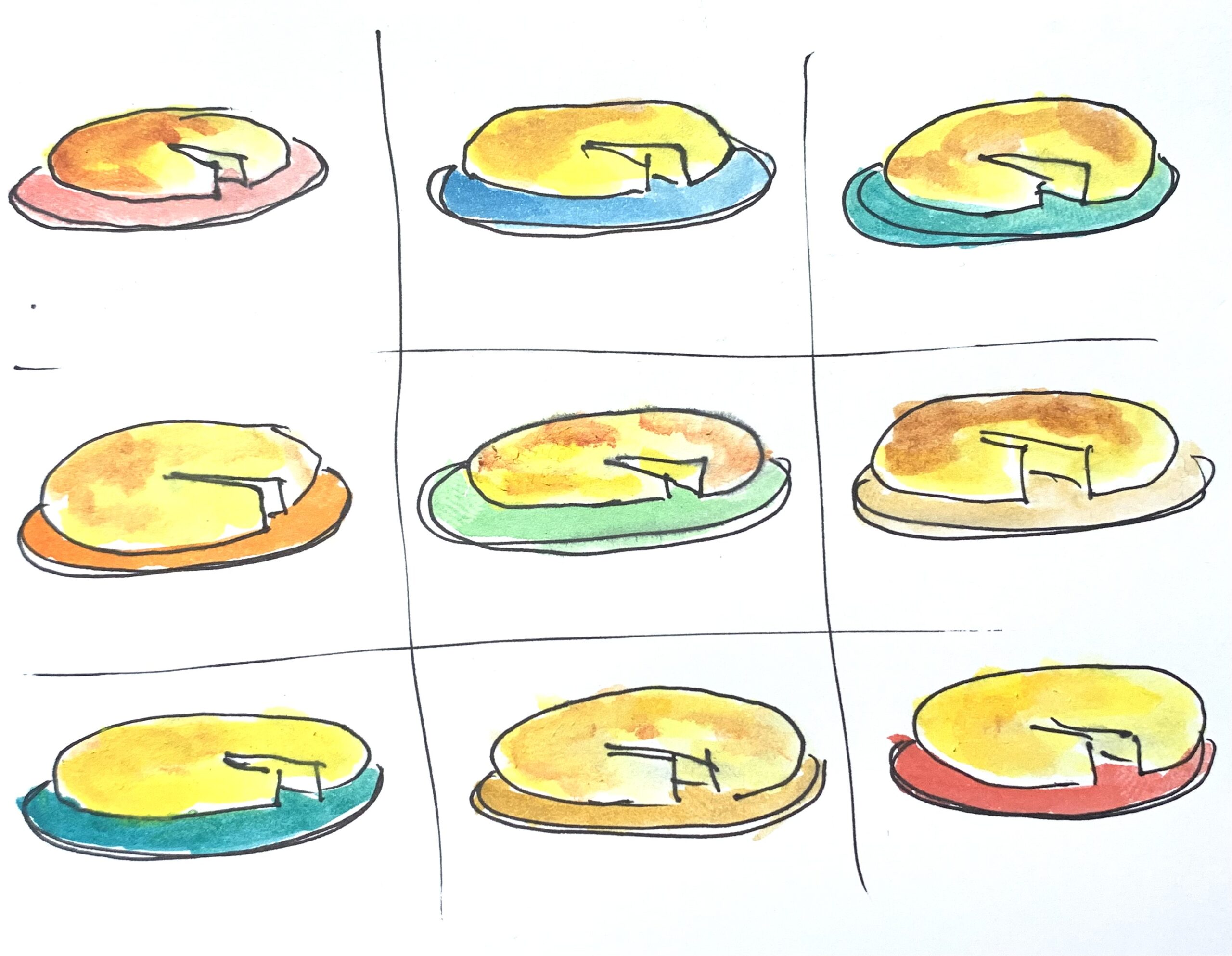When I was working on the Peregrino album I commuted from the Ruzafa neighborhood to Estudio Millennia in La Fontet de San Luis. The walk took 25 minutes and I could use the time for vocal warmups or to meditate on what we were trying to accomplish on that particular day. Recording sessions started at 10:30. Already there were hundreds of people sitting at sidewalk tables enjoying almuerzo, which lasts from 9 to 12 and is the second of the Valencianos’ five daily meals. This always put me in a good mood.
The almuerzo, or esmorzaret as they call it in the local language, is a way of life in the Province of Valencia. It’s a vestige of an agrarian culture where the workday started early and a considerable caloric intake was essential. Transplanted into a 21st century urban environment the almuerzo has evolved into a gastronomic phenomenon that other Spaniards view with awe.
Cured olives and roasted peanuts are a requisite appetizer. Sometimes they serve light green pickled guandillo peppers which are finger-length and pack a vinegary and spicy crunch. The beer and wine are flowing. Next come sandwiches called bocadillos. These are half baguettes, crusty on the outside and soft on the inside, brimming with manchego and jamón, fried calamari and alli oli, some variation of the Spanish omelette called tortilla, meatballs, or a myriad offerings. The almuerzo is typically finished off with a coffee. A popular version, called a cremaet, is spiked with a layer of rum and sugar.
There is something tremendously fascinating and uplifting about people who go to bed at 1 or 2 and start the party back up again at 10 a.m. These aren’t just college students. It’s universal: young and old, police officers and heavy equipment operators, grandparents and office workers. At least one part of the world still knows how to enjoy themselves.
I dedicated the last four weeks in search of the best tortilla in Valencia and quickly learned firsthand that there is no such thing. The best tortilla, more often than not, is the one right in front of you. Hopefully you are thanking your lucky stars before digging in.
A Spanish tortilla consists of beaten eggs and a filling, typically potatoes — or onions and potatoes. The filling is cooked in hot oil and strained then blended in a bowl with the eggs. That mixture is poured into a pan with more olive oil over a medium flame. Once the moisture cooks off the spongy omelette is skillfully flipped so it browns on both sides. The thickness varies from one to almost three inches. It should be soft and glistening but not raw or too runny inside.
The Conquistadors brought the potato from Peru to Spain in the 16th century. Whether a tortilla should include onions is a major cultural divide. Everybody has a preference that probably originates in the womb. None of the restauranteurs who I asked were forthcoming about what set their tortillas apart. Was it the olive oil, the cooking time, secret sources of eggs, potatoes or onions, just the right amount of salt?
For me, eating even half a tortilla for almuerzo usually also counts for lunch, or comida. That’s the third meal in Spain’s bottomless quiver of eating and drinking rituals. With a filling of potatoes and onions (my preference!), spring garlic, veggies, or bacalao (a salty cod and potato mixture which is also super good), tortillas are fortifying. I tried them in city markets, a former Communist Party headquarters and in the home of my dear friend, Jorge, who gave me a personal demonstration on the finer aspects of tortilla making. A Madrileña told me the only place you can find a legitimate tortilla in the whole country is in the capital.
In his excellent book, Grape, Olive, Pig, Matt Goulding writes that in the years following the Spanish Civil War, a popular recipe was tortilla de patatas sin patatas ni huevos, (a tortilla without eggs or potatoes). Written by Ignasi Domènech, this was a response to the poverty that gripped southern Europe in the middle of the 20th century. Food was often in short supply. Dirt was added to bread flour. People learned to transform scraps of meat and vegetables into dishes. In this omelette recipe, the rind and pith of an orange mimicked the texture of the potato. Flour and water replaced the egg. Decades later this culture of culinary ingenuity propelled Spanish chefs onto the global stage. Combining traditional techniques with micro-gastronomy and tasting menus, they revolutionized 21 century restaurant cuisine.
My friend, Salva, recounted with relish that one of his childhood favorites was tortilla with potato chips. “It’s nice and crunchy and the chips already have a lot of oil.” This is a common dish in Andalusia. You can even find a recipe for omelette with potato chips from superstar chef Ferran Adrià (El Bulli).
The tortilla has a few hilarious roles in the 1990s social satire “Jamón Jamón.” Silvia, played by the often half-naked 18 year old Penélope Cruz, says that if it wasn’t for helping her mother, who sold tortillas to pay their bills, she would never make another one again. Later in the film, her lover, Raúl, played by her now husband, Javier Bardem, proclaims that Silvia’s breasts taste like jamón and tortillas and chili peppers. This was director Bigas Luna whirling up Spanish cuisine with sexuality in a cinematic blender. It definitely worked for me.
©2022, Dan Imhoff. All Rights Reserved.
Matt Goulding, Grape, Olive, Pig: Deep Travels Through Spain’s Food Culture, Harper Wave, 2016. Look for my interview with Matt in the upcoming Season 2 of the Full Expression Podcast.



